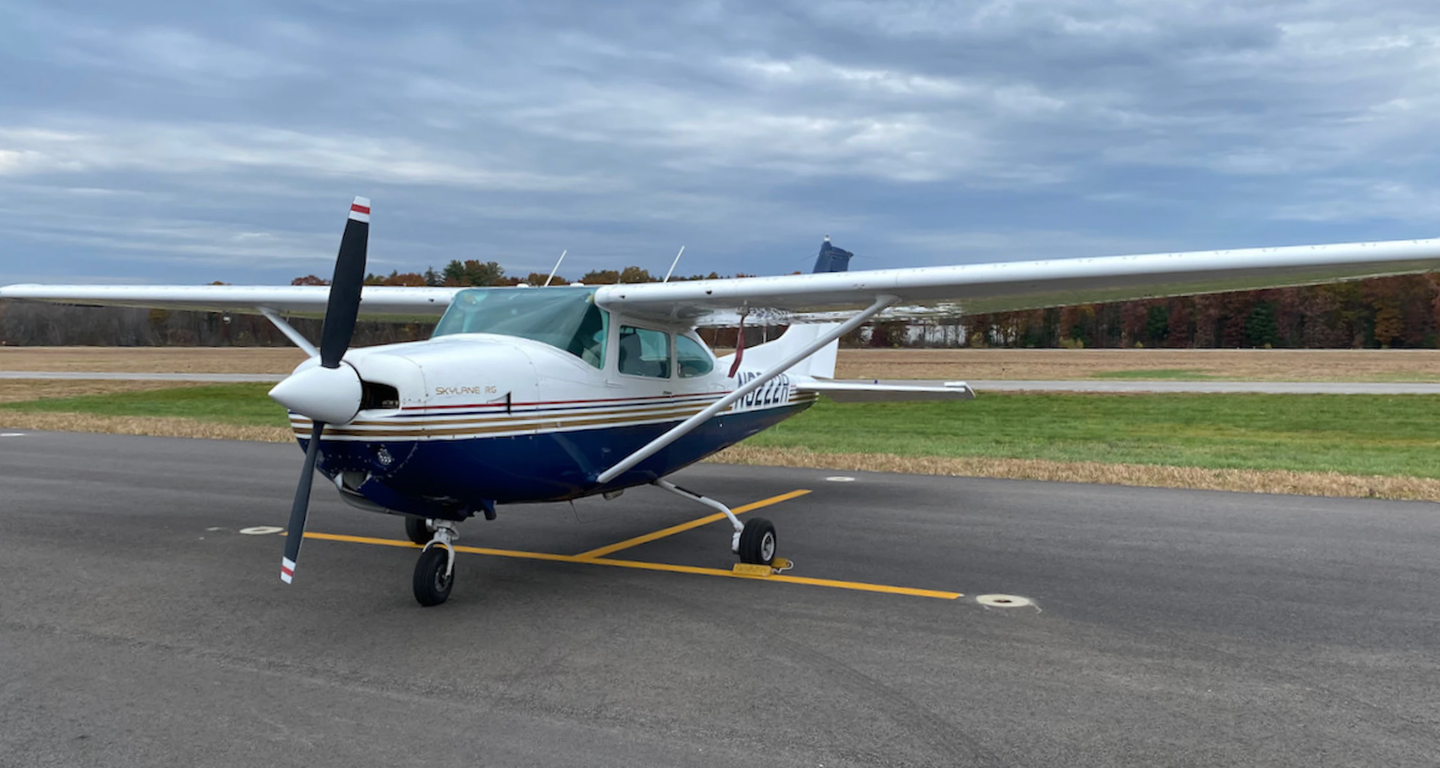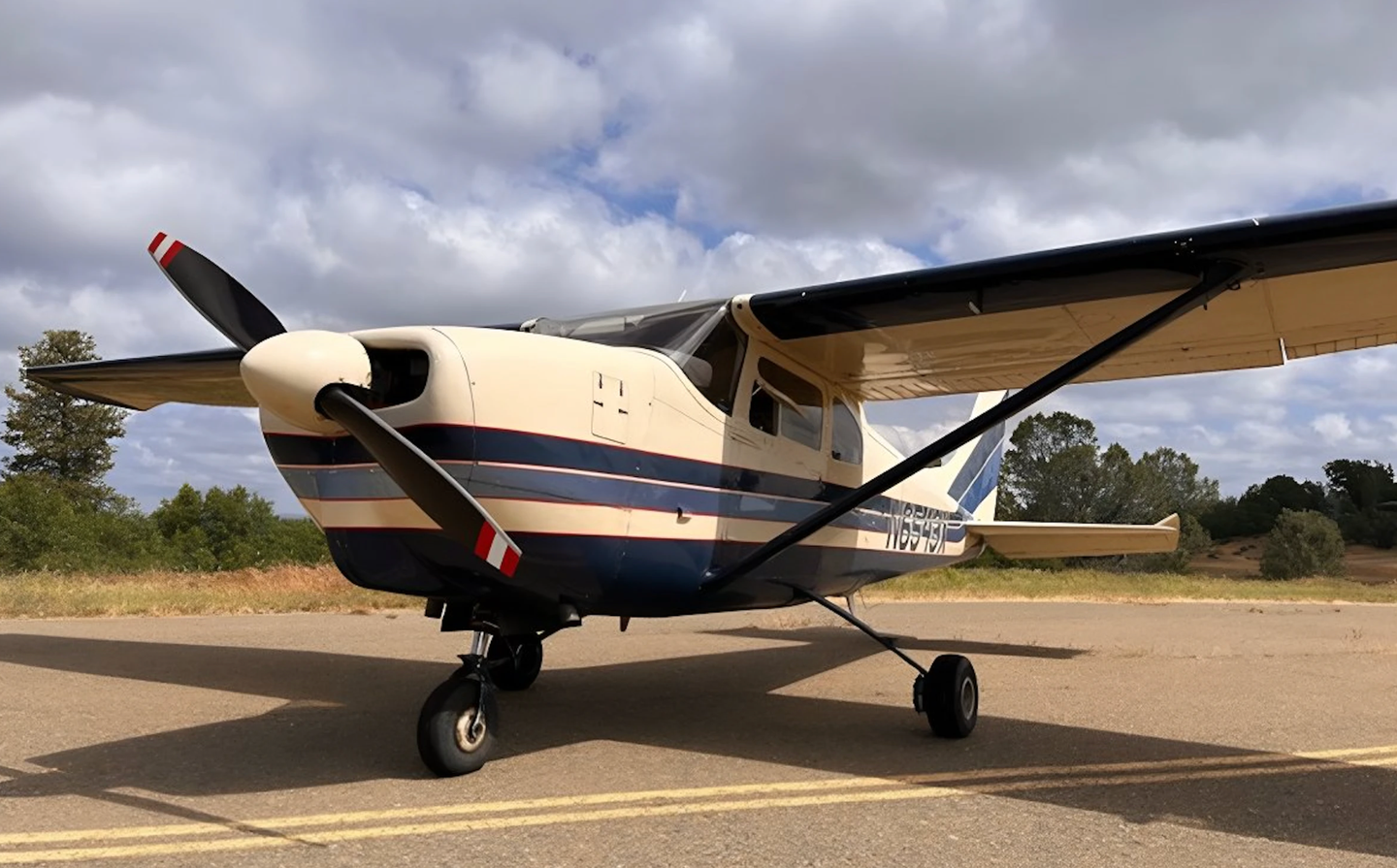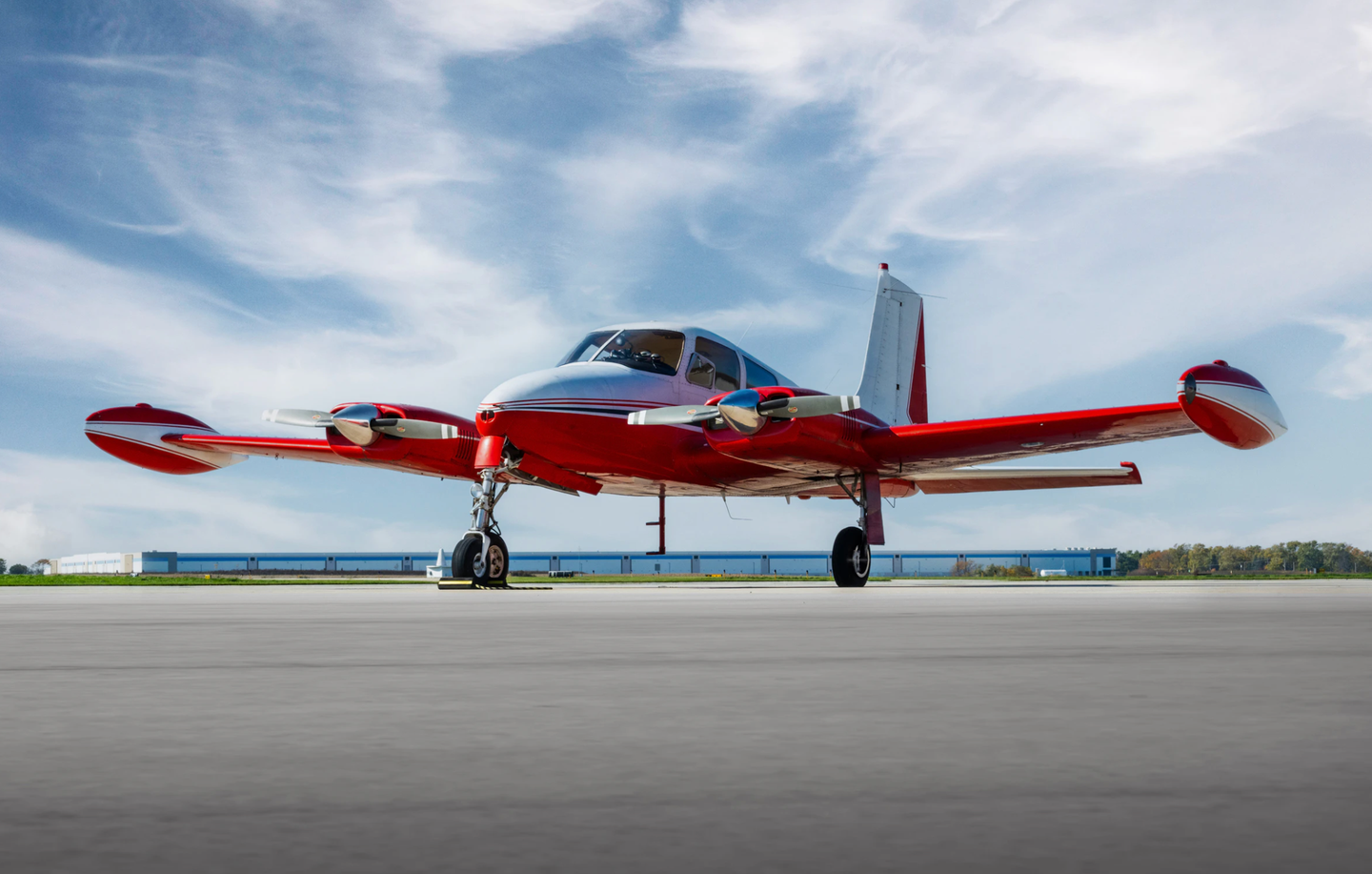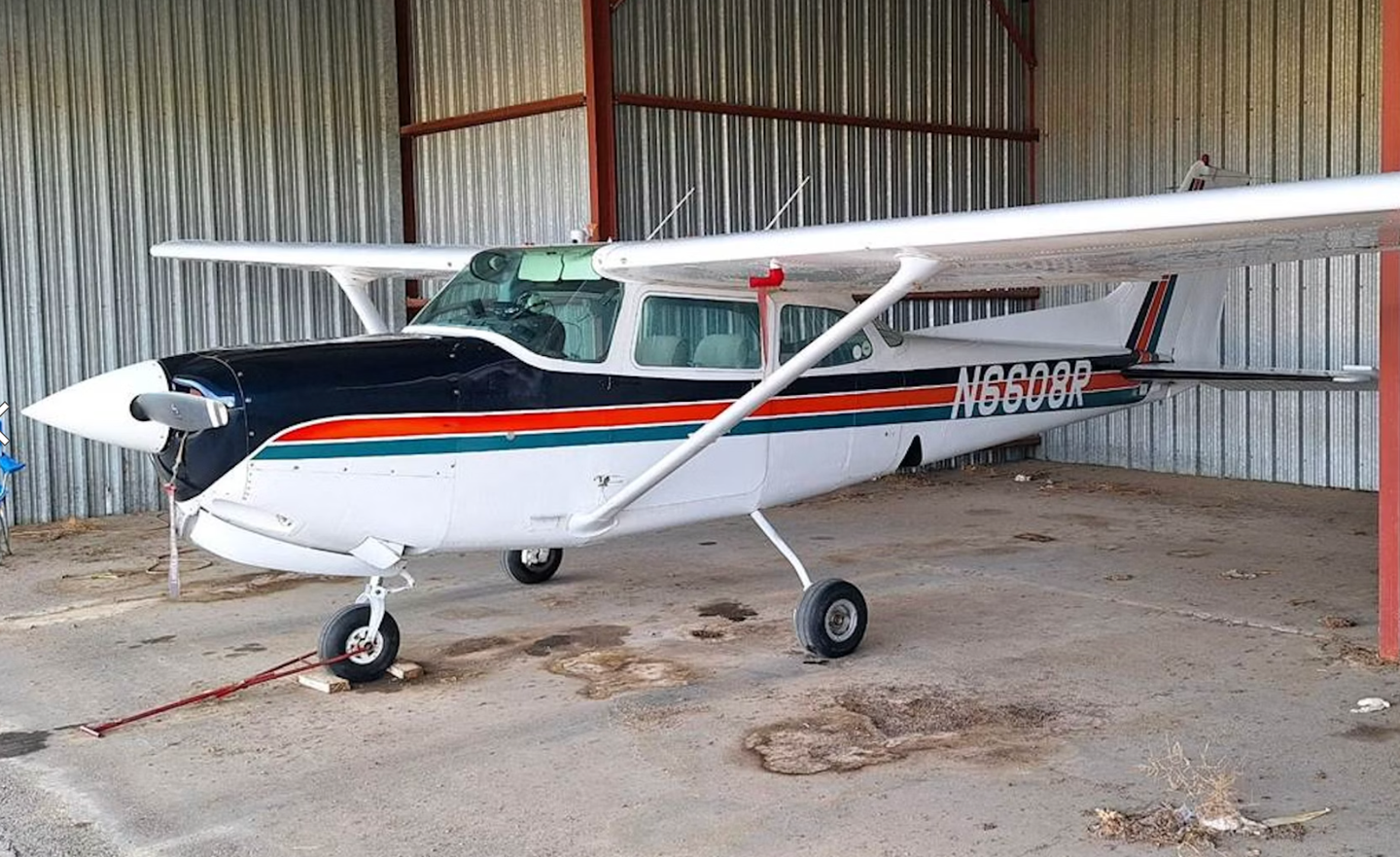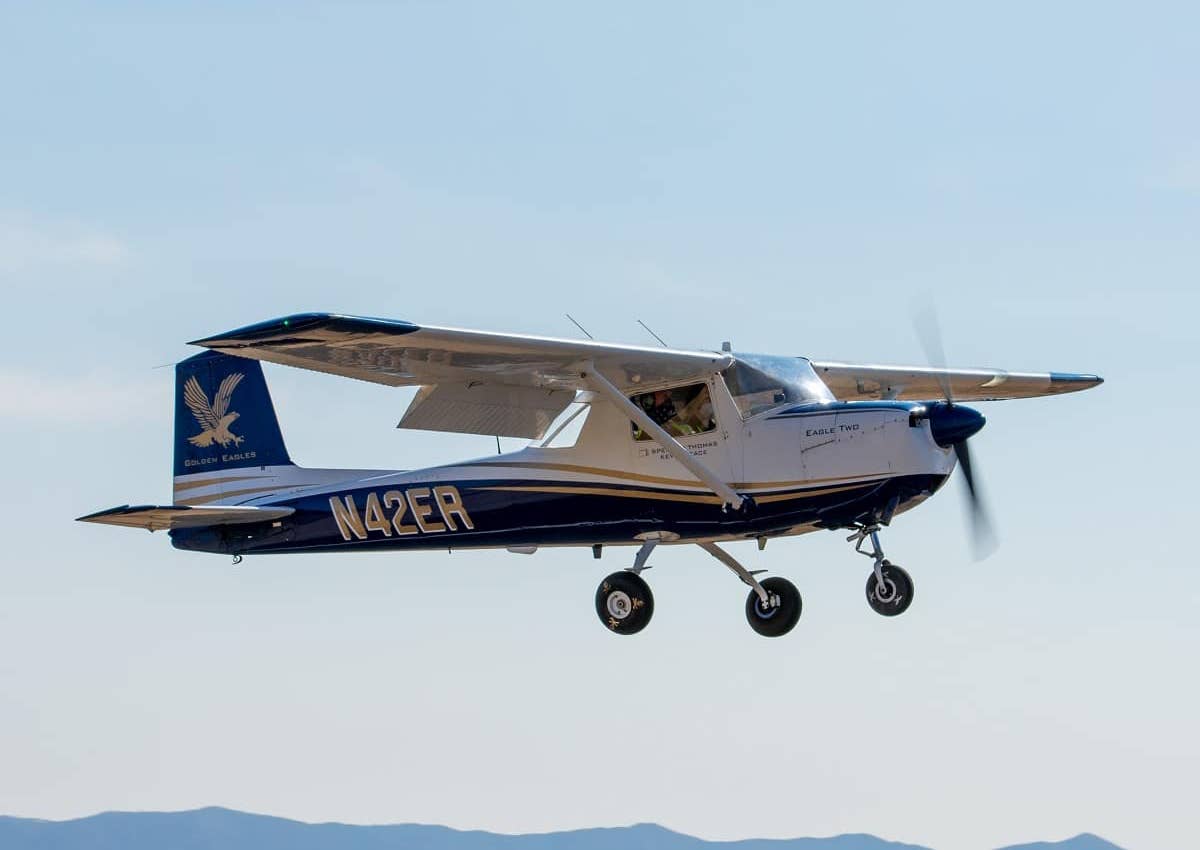The Sierra Stallion
It’s not your father’s Citation!
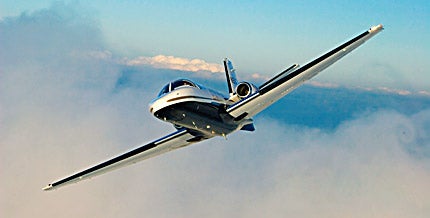 Pilots often nickname airplanes they love and, conversely, ones they dislike. There's "Spam Can" for Cessna pistons and there's the denigrating "Fork-Tailed Doctor Killer" for V-tailed Bonanzas; one of the most derisive is "Slow 'Tation" for Cessna's entry-level jet. It's hard to believe, but some folks malign the Cessna Citation as a "near jet" and use other less-than-flattering descriptions.
Pilots often nickname airplanes they love and, conversely, ones they dislike. There's "Spam Can" for Cessna pistons and there's the denigrating "Fork-Tailed Doctor Killer" for V-tailed Bonanzas; one of the most derisive is "Slow 'Tation" for Cessna's entry-level jet. It's hard to believe, but some folks malign the Cessna Citation as a "near jet" and use other less-than-flattering descriptions.
In a way, it's hard to accept the Slow 'Tation moniker for what really was the first very light jet. Conceived in the late '60s as an eight-passenger Learjet competitor capable of a 1,300 nm range, the Citation's cruise speed of 335 knots beat all the light- and medium-piston twins in speed and range. Another significant factor in the Citation's favor was single-pilot certification, either owner flown or with one professional pilot.
For most pilots and owners, a 100-knot improvement in cruise speed over a piston twin was significant, but it was still slower than the Learjet 23, which could cruise at 440 knots. The Citation's advantage lay in its extra seats and lower operating cost, and it became, arguably, the best-selling business jet in history.
Fast-forward to 2006: the VLJ phenomenon is preparing to sweep general aviation. Cessna is certifying a new entry-level jet, the Mustang; companies like Eclipse, Adam, Embraer, Diamond, Cirrus, Piper and even Honda are competing for a piece of the market---a market essentially pioneered by the Citation. When all this new competition hits the market, what happens to an airplane that's no longer in production? Of course, the conventional wisdom is that new VLJs are smaller, cheaper, faster and more economical than outmoded bizjets.
You wouldn't think that a Slow 'Tation could compete in such a climate, much less set a world speed record. In fact, within the last two years, a certain Citation set six speed and distance records: speed over closed courses, distance without landing, speed over a recognized course, transcontinental, west-to-east and speed around the world westbound. But that jet wasn't a run-of-the-mill Citation, it was a modified airplane from the hangars of Sierra Industries (www.sijet.com).
How do older airplanes keep up with the new hotrods? It's a simple formula: Anytime there's a significant base of aircraft, there are people who will make improvements to the basic design. Mark Huffstutler is an example of this rule.
In 1980, Mark opened an FBO and, thus, embarked on a career in the aviation business. Soon afterward, he acquired Sierra Industries and bought the Robertson STOL operation. With Robertson and a few other acquisitions came several STC'd Citation modifications, chief among them the Eagle wing fuel modification. He didn't stop there. "Today we hold over 80 STC modifications for Citation aircraft alone, from locks to motors," he says. "More than one third of the Citation fleet has a Sierra modification. We have 90 Eagle modifications flying and have done over 120 long-wing aircraft."
Not satisfied with wider passenger doors, camera and baggage doors or radome covers, Mark wanted to find a permanent solution to the underpowered, expensive-to-operate Pratt & Whitney engines. "We started working with Williams in the mid-'90s," he explains. "First we looked at re-engining Learjets, but abandoned that project due to thrust issues. When Williams introduced the FJ44-2 motor in 1999, we really began working on the Citation application, achieving approval in March 2002. Combined, the wing and the engine modification result in a range increase of 65% to 1,650 nm, a speed increase of 50 knots and reduced time to climb to FL430, beating the older airplanes' climb performance by almost an hour. A fantastic improvement."
The true test of payload, range and climb capability is performance at high-density altitudes. In the United States bizjet world, the benchmark is the Aspen Two departure from Sardy Field Aspen, Colo. A climb rate of 950 feet per mile is required for just over four miles---few business jets can achieve these results. According to Mark, "We can do Aspen. Every other jet in this weight class must off-load people or fuel, or wait for cooler temperatures to meet the climb requirement out of Aspen. We can take off in the middle of summer at gross weight and climb straight to cruise altitude. There's no combination of weight, temperature or field elevation at which we cannot do that."
The Williams engine used by Sierra is smaller and lighter and produces significantly more thrust than the Pratt & Whitney JT15D it replaces. Climb rates are up across the board; twin-engine climb by 73% and, most importantly, the single-engine climb at gross weight is improved by 69%. Power in reserve contributes to safe operations at any airfield. The FJ44-2 generates 32% more thrust, and fuel consumption is reduced 25% from the legacy engines. All in all, the Williams is an ideal match for the venerable Citation airframe.
Engine upgrades are common in the piston-engine arena, but they're less common for jets. The economics for jet engines are driven by the fact that they're rather expensive to buy and to maintain. A JT15D overhaul can cost from $175,000 to $500,000+, without any guarantee for final price. Most owners consider an upgrade when their engines reach TBO; in the jet market, that calculation is turned on its head. Resale value of the jet engine as a core is higher when the engine still has time left before TBO. These engines are commonly used as replacements for timed-out engines because of the unpredictability of overhaul costs.
Sierra incorporated several new design features with the engine upgrade: a new support structure for the Williams fan-jet that improves maintenance access of the engine and a new engine inlet/exhaust system. In the cockpit, new, redundant, color, electronic displays replace the dial indicators and are a perfect match for the Williams electronic engine controller.
The Sierra facility is a one-stop shop that can perform all scheduled phase checks during the modification period, and install new avionics, interiors and paint. When you pick the airplane up at Sierra's home airport, it's a virtually new airframe/engine combination.
A recent count showed eight airplanes on the ramp and 10 in Sierra's hangar. By any measure, it's a significant fraction of the Citation fleet. "We've done 28 Eagle II airplanes and 10 Stallions thus far, and we expect to surpass 50 total by the end of the year," Mark Huffstutler explains.
With such an improvement in performance, the Sierra Stallion competes head-to-head with brand-new bizjets in the same weight class. A cruise of 390 knots beats the Cessna CJ2+ and the Hawker Beechcraft Premier hands down. The Stallion's climb rate exceeds the CJ2+'s by 600 fpm; it exceeds the Premier's by 1,200 fpm on two engines and by 400 to 550 fpm on one engine. The biggest difference is maximum fuel payload for the Stallion, which is more than twice that of either brand-new jet---better numbers than new competitors at half the price.
The Stallion is competitive with mainstream bizjets with price points in the range of the emerging VLJ market. Of the two certified VLJ-class jets currently on the market, the Stallion beats the numbers of both the Eclipse 500 and the Cessna Mustang. At full fuel, the Stallion can carry a payload that's 900 pounds heavier than the Eclipse's, and 1,070 pounds heavier than the Mustang's. Cruise speeds are almost 80 knots slower for both VLJs. Of the other VLJs in development, only the HondaJet exceeds the Stallion in speed and altitude. By any measure, the Stallion is a major player in the single-pilot, light-jet category.
The Stallion really shows its stride in a demonstration flight. A direct climb to FL430 in less than 26 minutes puts you above most of the weather and most of the airline traffic. Flying direct saves fuel and time. The most impressive operational change the Stallion offers over the classic Citation is the additional 60 knots above stall margin at cruise altitudes. Operating at very high altitudes results in lower indicated airspeeds and lower margins between cruise and stall; even the Learjet has narrow margins in the high air. Flight planning is simple, and rolling into 30 degrees of bank at FL430 can be done without any worries.
An interesting artifact of cruising at high altitude is cold soaking. Most environmental control systems have trouble keeping up with such large temperature and humidity swings, resulting in pops, surges and windshield fogging. The Sierra installation can handle full cabin pressure on one engine at altitude and has no trouble with rapid descents and defogging.
Power management with the Stallion is dead simple. There's no need to synchronize the engines or worry about compressor stalls. The engine operates best at 100%, and automation eliminates fan harmonics. Nothing could be simpler. The result is a jet with a solid feel that gives you a real kick in the pants when the engines spool into the power zone.
Sierra has sold airplanes all over the world, with the first Stallion delivery going to Canada. Al Kroontje flew his Stallion 1,498 nm to Calgary at an average of 354 KTAS; it was a transformational trip for the Citation owner who flew at an altitude well above the moderate turbulence that bedeviled the airlines that day.
Jason Stone, chief pilot for AD Aviation in Liverpool, England, operates three Citations all over Europe with stage lengths up to 1,350 miles. Recently he test-flew the first Eagle II aircraft destined for England from Sierra's Uvalde, Texas, facilities. "The difference in climb performance is unbelievable," he says. "This Citation used to be slow, and now I have to work hard to keep up with the airplane. It's just brilliant!"
To highlight the flexibility and speed of the Stallion, Mark Huffstutler flew the airplane from Scottsdale, Ariz., to Orlando, Fla., for the 2006 NBAA convention, posting a time of less than four hours over 1,650 nm. Averaging 370 KTAS, he landed with 106 gallons of fuel on board. "Owners can count on a day to day range of 1,400 nm while cruising at FL430," Mark explained.
The Stallion re-engining program takes between 10 and 12 weeks to accomplish and costs approximately $1,530,000 depending on engine trade-in value. But with their current mods installed on your Citation, you'll be able to beat most of the VLJs into the air and be on your way in style with every seat filled.
Sierra has no plans to sit on its laurels, they're working on a re-engining program for the Cessna Citation II series that boosts the scruise speeds above 420 knots with payloads more than twice that of the Premier 1A and Hawker 400XP. According to Huffstutler, "Wait until you see our new Super II modification---you won't believe it!"

Subscribe to Our Newsletter
Get the latest Plane & Pilot Magazine stories delivered directly to your inbox


